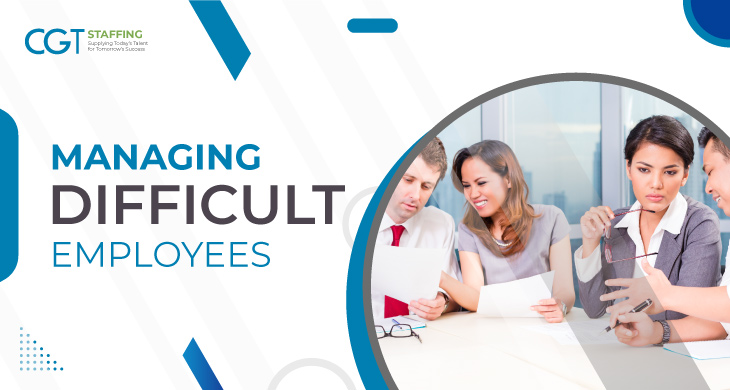Managing difficult employees is challenging for managers as most of them are either unprepared to handle (or reluctant to take) any action, especially if that employee is a contributing member of the larger team. However, it is crucial to address behavioral issues in time to have a healthy work environment. Disruptive behaviors can otherwise impact the morale of others and hamper productivity.
Table of Contents
Types of Disruptive Behaviors
Recognizing problematic behaviors early on is the first step for managers in bringing corrections. The following are examples of general categories of disruptive actions:
Gossips and Rumors
Gossiping is often viewed as harmless fun among many employees. It is usually some type of sensational info about one’s personal or professional life, with opinions offered without consent. With that in mind, gossip can negatively impact the working environment and rumors can tarnish an employee’s reputation and make them feel cornered. Both are problematic scenarios.
Rudeness and Bullying
Disruptive actions, including raised voices, rude tone, and physical intimidation are major behavioral problems. Bullying may not always include visible uncivil behaviors as bullies often use tactics like social isolation, overburdening someone with tasks, and manipulation.
Employee Insubordination
When an employee refuses to follow reasonable orders, that could be just one event leading to strict disciplinary action or a series of events culminating in greater escalation. Ideally, the problems leading to insubordination should be dealt with early to avoid unnecessary outbursts or large-scale intervention. However, it is important to have a fair workplace investigation process to determine the scale and scope of the issue at hand.
Steps to Managing Difficult Employees
The following are the steps to deal with disruptive behaviors among employees:
Listen to the Difficult Employee
Avoiding a difficult employee is never the solution. It can create a sense of validation of their actions, which can worsen the situation. Listening to the reasons behind their actions early on can potentially solve the problem quickly and expeditiously. Managers can learn what triggers such behaviors and often offer viable solutions. Questioning and subsequently listening to a difficult employee might also uncover conflicts that go beyond that one individual. Equally, it also tends to lower frustration and may immediately result in better behavior from all.
Give Behavioral Feedback
Listening alone won’t always fix the problem; it may result in the same behavioral patterns later. Providing feedback to an employee after any preliminary discussion is crucial. However, make sure that your tone and remarks are not personally offensive; otherwise, the employee could take a defensive position and the interaction may not be productive. Let them know that their problematic behaviors can impact the performance appraisal process.
Document Everything
Often managers make the mistake of not documenting the process of dealing with disruptive employees. Documenting everything, including the nature of the problem, the employee’s response to questions, and later developments helps managers to take necessary action in the future. For example, if the problem escalates and requires strict disciplinary action, comprehensive documentation provides managers solid grounds for action. Writing down developments also helps in making more objective decisions, far preferable to personal judgment. Documenting does not necessarily mean preparing for disciplinary action. Rather, it is a precautionary measure for the future.
Monitor Progress
Behavioral issues frequently impact the productivity of the employee and the overall team’s performance. Some of the best employee monitoring software can help track work progress. In conjunction with this, record feedback from other employees in tracking progress on behavioral issues. In-person meetings with the disruptive employee further aids in observing a change in behaviors. Transparency of process can frequently motivate disruptive employees to perform better.
Take Disciplinary Action
Final disciplinary action like having to terminate an employee should be leveraged as the last resort. Clear warnings on violations should be given first. It will provide a fair chance for the employee to proactively reflect and address his or her own behaviors. If you do not see any progress, you may have to take disciplinary action according to company policy. Make the reasons behind the action known to other employees to set an example of both transparency and consistency.
Conclusion
Managers should know the right process to deal with disruptive employees. Training managers in how to deal with disruptive employees can help to mold a positive working environment. In conjunction, preparing and empowering managers to handle such situations is crucial. On the other hand, it is also important to understand the pros and cons of a laissez faire leadership style to ensure the decisions made are on substantial grounds, and not on personal judgments.
